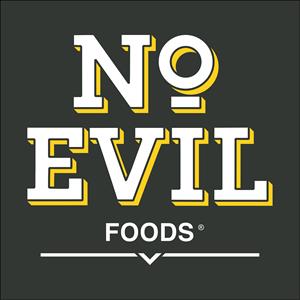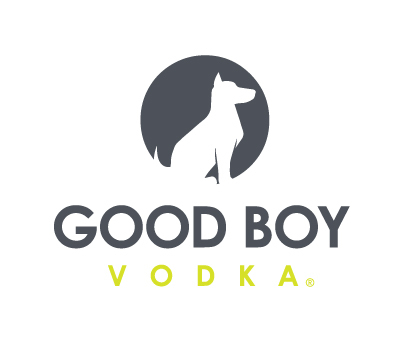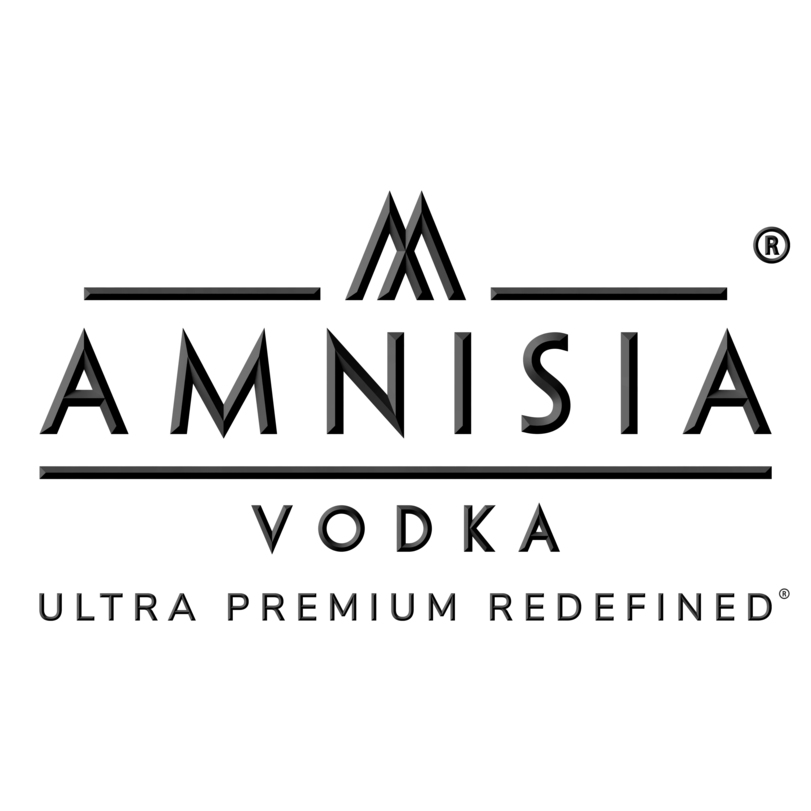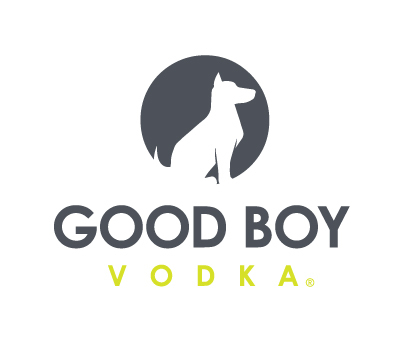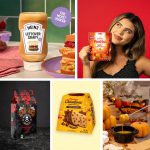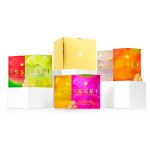How No Evil Is “Renewing” Its Focus On The Future With New Look and Product
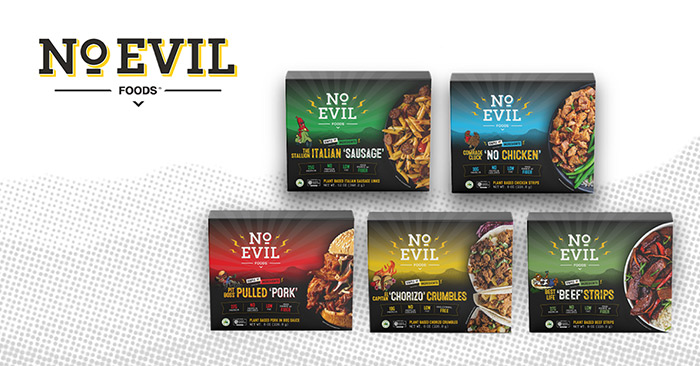
Plant-based meat maker No Evil Foods introduced a new look, updated its packaging and entered the alt-beef category this week with the launch of a line of vegan beef strips called “Best Life.” These changes arrive after a year of financial challenges for the North Carolina-based company which led it to layoff the majority of its staff and shift to a leaner manufacturing model.
In October, the company secured an undisclosed sum of capital from Big Idea Ventures’ New Protein Fund. Since then, it has been working to gain a better understanding of its consumer and hone in its goals and strategy while also continuing to uphold its sustainability commitments, said co-founder and COO Sadrah Schadel, adding that the company is focused on “rebuilding and renewal.”
“There’s no denying that we’ve hit some hard patches, but we’re turning a corner and now that some of the dust has settled, we can now shift our focus to the work we’re here to do,” Schadel stated. “We’re getting shelves restocked with products, bringing new products to market, deepening our retailer partnerships and continuing to improve our performance.”
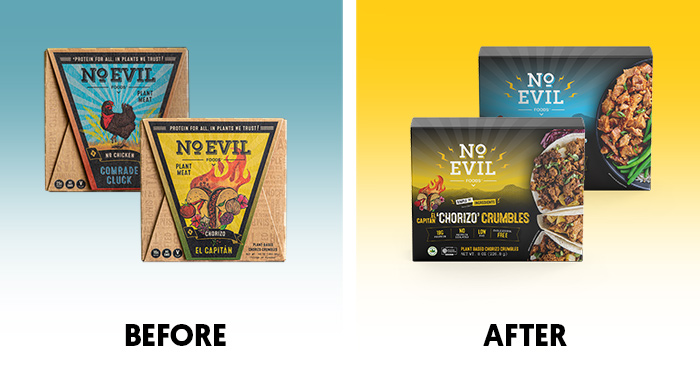
New Pack, Same Goal
For No Evil, a key component of improving performance is advancing its sustainability commitments. The company, which was founded in 2014 and has sold products in home-compostable, unbleached kraft paperboard cartons ever since, unveiled its new package made from Sustainable Forestry Initiative (SFI) certified paperboard and printed using renewable wind power and vegetable-based ink.
“Especially in a category that’s developing as rapidly as ours, packaging needs to evolve, brands need to evolve,” Schadel explained. “While our previous packaging’s unique design connected with buyers and consumers, it also had its limitations.”
Schadel said the new branding better communicates the product’s use occasions, attributes and values, including its clean ingredient list and Plastic Negative Certification, on front-of-pack. Though the brand’s emphasis on product visuals and aesthetics was always part of how it connected with consumers online, Sadrich said, the exclusion of food photography was a “missed opportunity” with the original packaging.
In an era of increased omnichannel grocery shopping, she said the new packaging will be more effective at connecting with consumers who shop across a variety of channels and aid product discovery, whether it be on a screen or in the aisle.
“The pandemic revealed a need for our packaging to do a different job than it had done before,” she said. “We needed it to work harder and to more effectively communicate what makes No Evil Foods awesome. We have an opportunity to reintroduce ourselves not only to the consumers who already love who we are and what we stand for, but it’s also a chance to clearly and quickly communicate our values to new consumers who are just discovering the brand.”
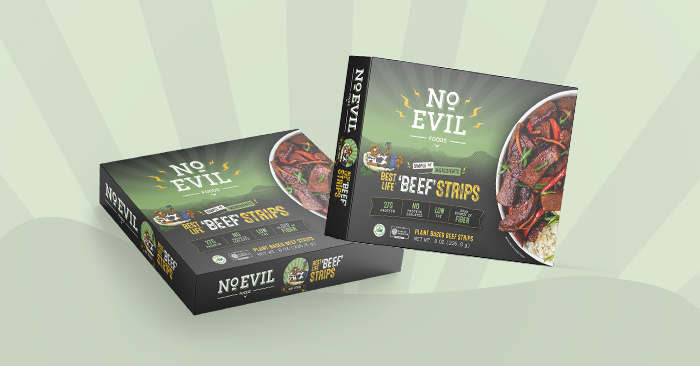
New Product and Formats
No Evil’s portfolio includes plant-based sausage, chicken, chorizo, pulled pork and even a holiday roast offering. According to Schadel, the company sees its entry into the alt-beef category as an opportunity to diversify the space with a product that is “different and fun.”
“The average American consumer spends almost twice as much on beef as compared to chicken, on an annual basis,” Schadel said. “It made sense to introduce a new protein variety to our line, [but] we’re not a “me too” brand – the category has enough meatballs, burgers, and patties.”
‘Best Life’ beef is formed into strips and is the brand’s first product made with upcycled ingredients – utilizing fibers from citrus peels discarded by the juicing industry. The beef strips will roll out at 300 Sprouts Farmers Market stores initially, followed by additional retailers later this year.
The brand has plans to introduce two additional sauced, plant-based meats direct-to-consumer this summer – a Chimichurri marinated ‘Chicken’ and a ‘Pork’ Al Pastor – and said its shelf-stable beef jerky line, which was first previewed in 2019, will also reach retailers later this year.
A New Outlook Going Forward
After stabilizing its finances last fall, the company reworked its business model to function with a smaller team and smaller budget, Schadel said. In September 2020, the company was operating with a team of over 60 employees, but after shuttering the doors of its manufacturing facility and shifting to a co-packer, that number has been reduced to nine people.
However, Schadel said this close-knit team has reinvigorated the “DIY-mindset, energy and excitement” she saw during the company’s early startup days. With plenty of new innovations in the pipeline and a leaner, more efficient model, the brand is now focused on how it “shows up in the world”
“There are several brands in our category with hundreds of millions of dollars at their disposal, brands that can afford to sell their products for a 0% margin in order to hold their shelf space, and that puts a lot of pressure on smaller brands who are not as resourced,” Schadel said. “We are one of those smaller brands and we believe that even with less funding, we offer something authentic and different to the category in a way that others can’t. We know this and our strategy is to make sure that our consumers know it too.”

